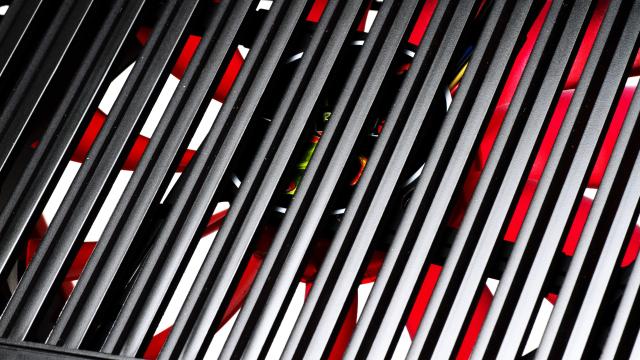The trend for laptop design has always leaned toward thinner, not fatter, leaving less space for ventilation. That makes a whining fan during intensive work like photo editing or gaming an unwanted but common occurrence. This is where laptop coolers come in.
Image credit: Sentey/Flickr
If you’re tired of dealing with an overheating laptop, look into getting a laptop cooling pad, an accessory that will add some cooling capacity as well as a port or two to your laptop. Here are some tips for the first-time buyer to consider.
Get one with a fan
Laptop cooling pads are essentially metallic mesh-covered rectangles with built-in fans designed to force cool air into your laptop. The increased airflow means your laptop stays cooler and doesn’t kick on its own internal fan the minute you decide to get some work done. Cooling pads vary in design; some have a single large fan while others feature multiple smaller fans.
The amount of air pushed by a fan is measured in cubic feet/metres per minute, with larger fans moving more air than smaller ones. A cooling pad with a high CMM is better equipped to cool your laptop, even when compared to pads with multiple, smaller fans with lower CMM per fan.
Passive laptop cooling pads don’t have fans at all. They rely on leaving enough space around your laptop for air to flow more easily, much like a laptop stand. Passive cooling pads might have grooves or bumps that raise your laptop a few centimeters above the pad or your lap. To be frank, a passive cooling pad is pretty useless, and I’d recommend you find one with a fan before you look into purchasing what is essentially a bumpy surface for your laptop.
Make sure it’s versatile
Get a cooling pad designed for your ideal environment. If you love to chill in bed and game away, your laptop and cooling pad vents can get obscured by your sheets or clothes, so look for a dock that offers multiple vents or enough clearance for easy airflow. Like to work on a desk? Find a cooling pad with legs or an adjustable base.
If you travel with your laptop, portability is a factor. Some cooling pads feature integrated cable management, or allow you to strap your laptop into place for easy transportation.
Add more ports
Attaching a USB-powered laptop cooler means you’re ostensibly losing a port to keep your laptop from overheating. Some do have optional adapters for dedicated power, but I’d hate to carry around yet another power brick for no reason.
Some cooling pads offer pass-through support, but that means you’ll have whatever USB device you’re connecting to your laptop plugged in to the cooling pad’s USB port, creating an extra long protrusion from your port. Find a cooling pad with an extra USB port, like the ThermalTake MASSIVE cooling pad, so you don’t have to worry about the tradeoff. The MASSIVE also features built-in temperature sensors for automatic fan action.
You can always go high-end and find a cooling pad that doubles as a dock. Some pads like the Cooler Master’s FS-17 which packs four USB ports, a micro USB port, and an adjustable fan speed dial. Some offer not only traditional USB-A ports but multiple high-speed USB ports along with USB 3.0 or micro USB ports. Either way, you’ll have enough ports to keep you satisfied and a laptop cool enough to use without worry.

Comments